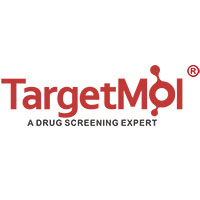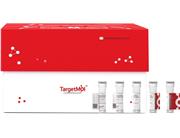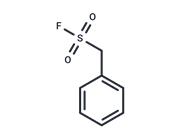| Name | ABMA |
| Description | ABMA is a broad-spectrum inhibitor of intracellular toxins and pathogens, efficiently protecting cells against various pathogens including viruses, intracellular bacteria, and parasites. ABMA selectively acts on host cell late endosomes rather than targeting the toxin or pathogen itself. |
| Animal Research | Animal Model: Pathogen-free female BALB/c mice (6 week-old) with ricin
Dosage: 2 mg/kg, 20 mg/kg, 200 mg/kg
Administration: i.p. [1] |
| In vitro | ABMA confers cellular protection against four bacterial toxins [Corynebacterium diphtheriae (DT; EC50 of 62.9 μM), Bacillus anthracis (LT), Clostridium difficile toxin B (TcdB; EC50 of 73.3 µM), Clostridium sordellii lethal toxin (TcsL; EC50 of 86.7 μM)], three viruses [Ebola (EC50 of 3.3 µM), rabies (EC50 of 19.4 µM), dengue-4 virus (EC50 of 8.2 µM)], two species of Chlamydiales intracellular bacteria (Simkania negevensis and Chlamydia trachomatis), and the parasite Leishmania infantum (EC50 of 7.1 µM) at micromolar levels. In A549 cells, ABMA treatment reduces ricin cytotoxicity with an EC50 of 3.8 µM and a protection factor (R) at 30 µM ranging from 5 to 10. ABMA retains almost 100% of its biological activity against ricin-induced cytotoxicity for up to six days [1]. |
| In vivo | ABMA (2-200 mg/kg; i.p.; female BALB/c mice) treatment protects mice from nasal instillation of an LD90 of ricin[1]. |
| Storage | Powder: -20°C for 3 years | In solvent: -80°C for 1 year | Shipping with blue ice. |
| Solubility Information | DMSO : 112.5 mg/mL (321.2 mM), Sonication is recommended.
|
| Keywords | ABMA |
| Inhibitors Related | Picaridin | PHYTOL | Kaempferol | Hydroxychloroquine | Metronidazole | Nitazoxanide | Doxycycline | Chloroquine phosphate | Diethyltoluamide | Artemisinin | Benzyl benzoate | DL-Methionine |
| Related Compound Libraries | Anti-Parasitic Compound Library | Bioactive Compound Library | Inhibitor Library | Bioactive Compounds Library Max |

 United States
United States



